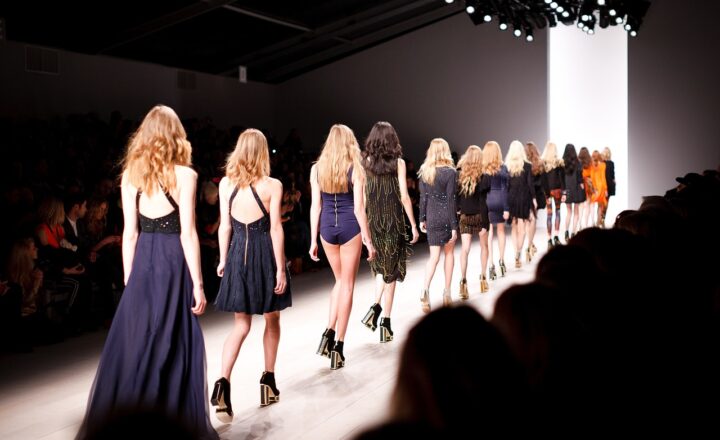The 2020s: Predicting the Next Big Trends in Fashion and Culture
November 19, 2024

As we navigate through the 2020s, it’s crucial to consider how our society’s values, technology, and lifestyles are shaping the trends in both fashion and culture. The past few years have seen rapid shifts, powered by technological advancements, social justice movements, and a global pandemic that dramatically changed our day-to-day lives.
In this article, we will explore the expected trends defining this decade, focusing on sustainability, inclusivity, digital innovation, and the intertwining of different cultural elements.
1. Sustainability and Ethical Fashion
The concept of sustainability has moved from niche to necessity. Consumers are becoming increasingly aware of their impact on the environment and are demanding more accountability from brands. This awareness is leading to a surge in sustainable practices across the fashion industry.
- Eco-Friendly Materials: In the coming years, expect to see a rise in the use of organic cotton, Tencel, hemp, and other eco-friendly materials crafted for clothing. Brands are developing innovative materials like mushroom leather and recycled textiles that minimize environmental impact.
- Slow Fashion Movement: The focus is shifting from fast, disposable fashion to timeless pieces that are made to last. Consumers are investing in fewer but higher-quality items, embracing the principles of slow fashion that emphasize durability and craftsmanship.
- Transparency & Ethics: Brands are expected to provide transparency about their supply chains. Consumers will increasingly research where their clothing comes from, who made it, and under what conditions. This ethical consumerism will become a standard expectation rather than a luxury.
2. Inclusivity and Diversity in Fashion
The push for diversity and inclusion is reshaping the landscape of fashion and culture. The representation of various body types, ethnicities, genders, and abilities is not only a conversation; it’s becoming a vital component of branding strategies.
- Body Positivity: Expect to see a more inclusive approach to sizing and representation on runways and in advertising campaigns. Brands that offer a wider range of sizes will gain a competitive edge as consumers gravitate toward companies that celebrate diversity.
- Gender Fluidity: The lines between traditional men’s and women’s fashion continue to blur. Unisex and gender-neutral collections will gain prominence, providing options that cater to all identities and expressions.
- Cultural Representation: The fashion industry is realizing the importance of respecting and incorporating various cultural elements accurately. Collaborations with artisans from around the world emphasize a richer tapestry of fashion inspired by diverse cultures while promoting fair trade practices.
3. The Intersection of Technology and Fashion
Technology is revolutionizing all aspects of our lives, and fashion is no exception. From virtual reality to artificial intelligence, the marriage of tech and style will dominate this decade.
- Wearable Technology: Expect a surge of fashion items integrating smart technology. Smartwatches and fitness trackers will evolve into stylish accessories, while clothing with embedded technology will offer innovative functions such as temperature regulation or health monitoring.
- Virtual Fashion Shows: The virtual space will see an increase in online fashion shows and augmented reality try-ons, offering consumers new ways to engage with brands and products directly from their devices. Brands may choose to skip traditional shows, opting instead for digital formats that reach a global audience.
- High-Tech Fabrics: Innovations in fabric technology will enable the creation of textiles that are water-resistant, stain-free, or self-cleaning, enhancing both the functionality and longevity of clothing items.
4. The Rise of the Digital Nomad Culture
The evolution of remote work has given rise to a lifestyle that prioritizes flexibility and travel. Digital nomads are reshaping cultural narratives and influencing fashion trends as they embrace a lifestyle that blends work and exploration.
- Comfort Meets Style: As more individuals work from anywhere, there will be a demand for versatile clothing that seamlessly transitions from casual to business-ready. Comfort-driven innovations, like athleisure and smart fabrics, are becoming essential to the modern wardrobe.
- Cultural Exchange: A blend of global influences will manifest through fashion choices, as digital nomads curate wardrobes that reflect their travels and experiences. This will make for a colorful and eclectic mix of styles emerging in mainstream fashion.
- The Importance of Local Artisans: Shopping local when traveling will become increasingly popular. Digital nomads will seek to support artisans and local brands, fostering appreciation for cultural uniqueness and craftsmanship.
5. The Influencer and Social Media Landscape
The role of social media influencers continues to evolve, driving trends and shaping consumer behavior in unprecedented ways. In the 2020s, this landscape will be defined by authenticity and connection.
- Micro and Nano Influencers: Brands will increasingly turn to micro and nano influencers who boast smaller, yet highly engaged audiences. These influencers create more personalized and authentic connections with their followers, leading to higher conversion rates for brands.
- User-Generated Content: Content created by consumers will become a significant component of marketing strategies. Brands will encourage customers to share their personal style and experiences with products, fostering a sense of community and trust.
- Purpose-Driven Influencing: Influencers who advocate for social issues and embody brand values will resonate well with consumers. Authenticity will be crucial as followers seek to support brands that align with their beliefs and ethics.
Conclusion
As we move further into the 2020s, the fusion of fashion and culture will reflect the increased awareness of social, environmental, and technological influences shaping our world. Embracing sustainability, diversity, and innovation will define this decade, paving the way for a vibrant and inclusive fashion landscape. By recognizing these trends early on, individuals and businesses can prepare to adapt and thrive in this dynamic environment.
Fostering connections and celebrating the beauty of diversity in fashion and culture will keep us grounded in what truly matters as we evolve in this ever-changing landscape of the 2020s.







